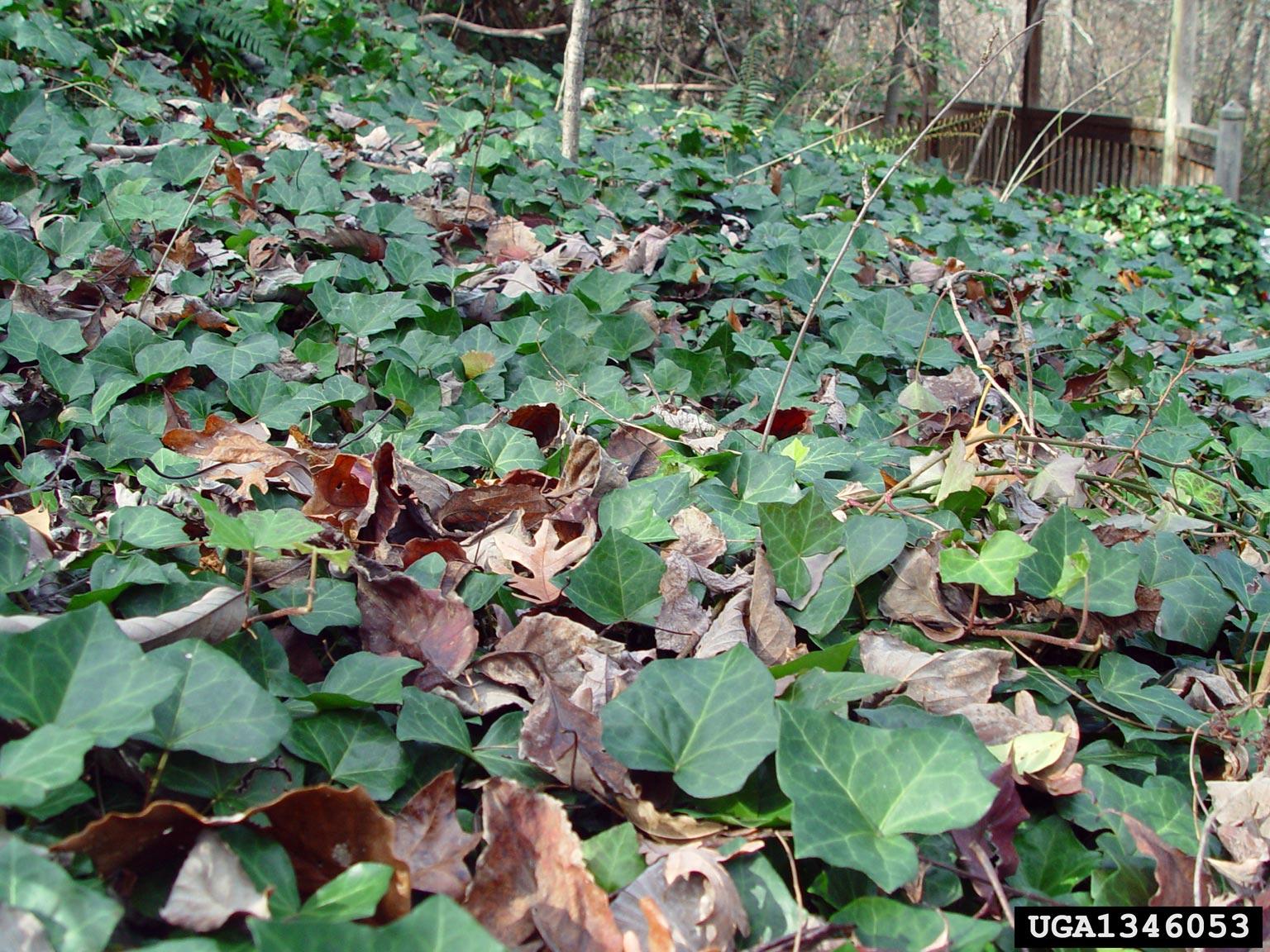About English Ivy
Life cycle
English ivy (Hedera helix) is an evergreen, invasive, fast-growing, perennial vine still being sold in plant nurseries.
Growth habit
Leaves are dark green, waxy, and alternate along the stem. Leaf form is variable; usually three-lobed with a heart-shaped base. Mature leaves can be un-lobed and spade-shaped. Grows as a dense groundcover (juvenile stage) and a climbing vine (adult stage). Dense foliage blocks sunlight and restricts the growth of other plants. Heavy vines cause damage and death to mature trees by loosening the bark and holding moisture against the trunk, making a good environment for fungal disease and decay. Heavy vines can take trees down in the wind, snow, and icy conditions. English ivy also serves as a reservoir for bacterial leaf scorch, a disease in maples, oaks, and elms.

Reproduction
Spreads by seeds and vegetative runners. Mature vines produce flowers and seeds, which are dispersed by birds.
Conditions that favor growth
Prefers semi-shady, moist soil but grows in many environments – woodlands, fields, forest edges, roadsides, and coastal areas. It also grows on and damages building façades.
What to plant instead
Groundcovers: Foamflower (Tiarella cordifolia), lady fern (Athyrium filix-femina), wild ginger (Asarum canadense)
Vine: Virginia creeper (Parthenocissus quinquefolia)
Invasive Plants to Avoid Buying for your Yard and Garden in Maryland
Controlling English ivy
- Invasive Vine and Groundcover Control
- NC State - Controlling English Ivy in Urban Landscapes
- (PDF) Control of Invasive Non-Native Plants
- (PDF) Plant Invaders of Mid-Atlantic Natural Areas
Additional resources
Kaufman, Sylvan Ramsey & Wallace Kaufman. 2007. Invasive Plants: Guide to Identification and the Impacts and Control of Common North American Species
Swearingen J., K. Reshetiloff, B. Slattery, and S. Zwicker. 2002. Plant Invaders of Mid-Atlantic Natural Areas. National Park Service and U.S. Fish & Wildlife Service, Washington, DC.
Compiled by Christa Carignan, reviewed by Debra Ricigliano, University of Maryland Extension, 3/2018
Still have a question? Contact us at Ask Extension.
